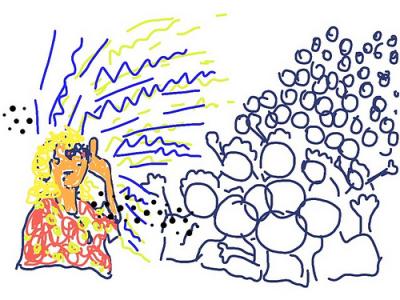Effective Communications: the Influence of Digital and Social Media in the Arts
Trudel | MacPherson Principal Mary Trudel was invited to author a guest post for Americans for the Arts, which was featured on the National Arts Marketing Project (NAMP) website and in a recent email newsletter. Mary’s guest blog is re-posted here. We’re excited for our upcoming NAMP webinar (there’s still time to sign up!) and to present our definitive national results at the NAMP conference in November.
 In our work as communications consultants specializing in the arts, the questions we hear most often tend to involve digital and social media.
In our work as communications consultants specializing in the arts, the questions we hear most often tend to involve digital and social media.
Even arts organizations that are recognized for innovating online are asking basic questions about the effectiveness of what they’re doing: if successful, how to make success more predictable and repeatable; and if not, how to get the sorts of results others are achieving.
Though there are of course best practices where digital and social media are concerned, we’re careful not to dispense too much advice until we know an organization well, since there are no one-size-fits-all answers. What we do typically say, though, is that it’s not about the tools. Yes, digital and social media have unique attributes and should change the way you interact (emphasis on interact) with your audiences. But, like any communications channel, they are most effective when integrated into a holistic strategy and policy.
It’s pretty intuitive—after all, we’ve been having conversations since we learned to talk.
But you would be surprised at how many organizations that are otherwise very smart and consistent about their communications have been struggling with this idea. Twitter, to use one example, seems to be about technology. The mechanics of using it, the odd 140-character vernacular, the incomprehensible condensations of common words, and the (literal) gibberish of shortened links seem like a peek into the chatter of an alien civilization.
But here’s the truth about Twitter: while it has its peculiarities, it’s actually very easy to use and learn, and it works the same way as short-form interaction in person. When you bump into someone you haven’t seen recently in an elevator and they ask you what your organization is doing, you give them a quick sentence or two and tell them where to go to find more information.
Likewise, Facebook may seem at times like a bizarre high school that has a shifting personal/professional, individual/institutional landscape. Once you figure out the distinction between a “profile” and a “page,” things make a lot more sense, and you begin to see the opportunities (most of them carrying very little risk) of experimenting with different types of content. (It’s a much bigger risk to have your interns take their best guess on tone when they’re interacting with valuable audience members—unless you’re blessed to have amazing interns, which happily many of the organizations we’ve profiled do.)
 Bottom line (and this is confirmed in the data we’ve been collecting in the national phase of How Strong Is Your Social Net?, our study of digital and social media in the arts): think of digital and social media as extensions of your organization’s voice, not as oddities or something that belongs purely in a technological realm just because the medium is a computer (or device).
Bottom line (and this is confirmed in the data we’ve been collecting in the national phase of How Strong Is Your Social Net?, our study of digital and social media in the arts): think of digital and social media as extensions of your organization’s voice, not as oddities or something that belongs purely in a technological realm just because the medium is a computer (or device).
You already know better than anyone else how you should be communicating using these modern tools: it’s the same way you already speak when you engage with your audience at a performance or other arts event. Just make sure you hold up your part of the conversation.
Tell us about your best/worst social media experience...
…and meet digital communications pioneers.
Click on our profile template to get started.
Want to get in touch?
We’d love to hear from you. Contact us.